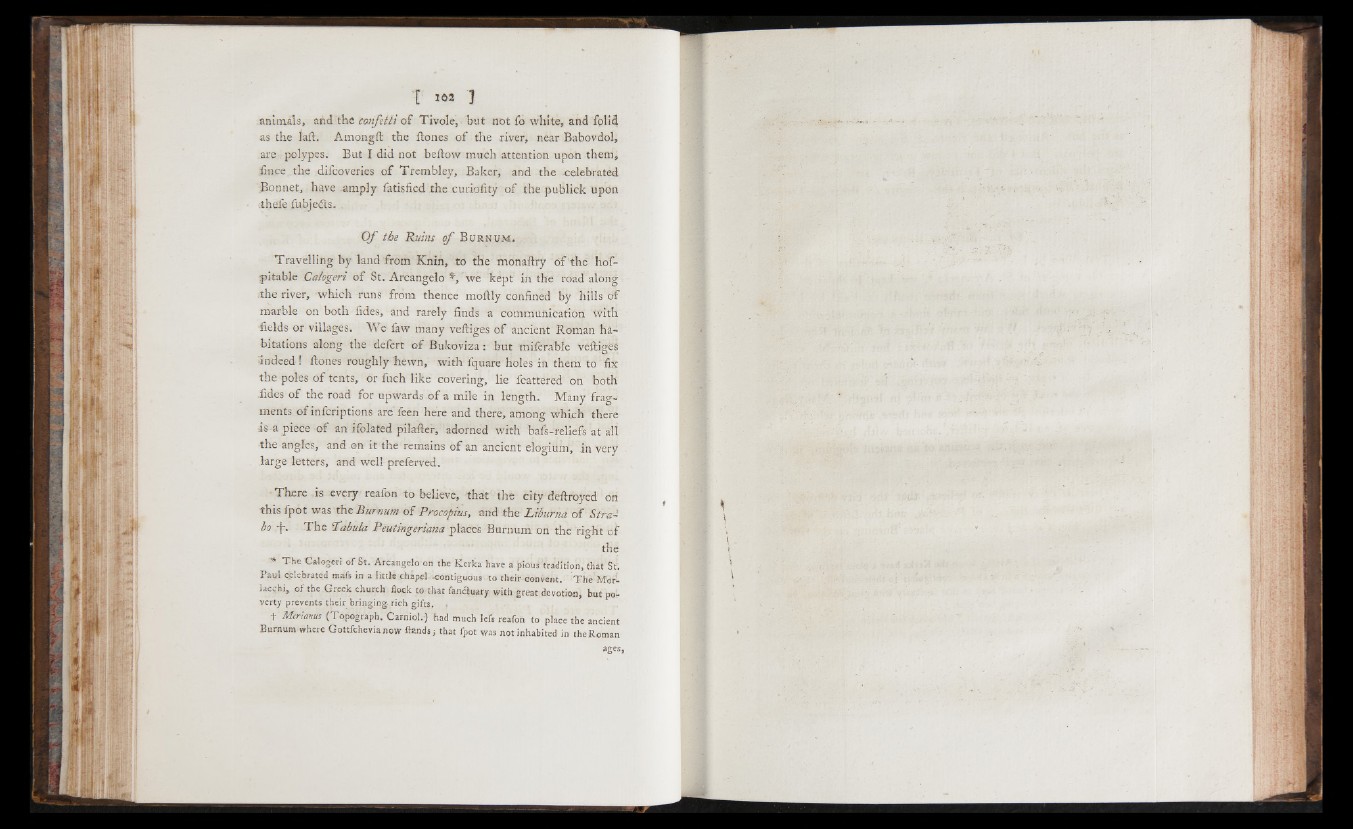
animals, and the confetti o f Tivole, but not fo white, and fplid
as the laft. Amongft the itones o f the river, near Babovdol,
are polypes. But I did not beftow much attention upon them,
fince the difcoveries o f Trembley, Baker, and the celebrated
Bonnet, have amply fatisfied the curiofity o f the publick upon
;thefe fubjefis. .
O f the Ruins o f B urnum.
Travelling by land from Knin, to the monaftry b f the hof-
pitable Calogeri o f St. Arcangelo we kept in the road along
the river, which runs from thence moftly confined by hills o f
marble on both fides, and rarely finds a communication with
fields or villages. We faw many veftiges o f ancient Roman habitations
along the defert o f Bukoviza: but miierable vciliges
Indeed ! ftones roughly hewn, with fquare holes in them to fix
the poles o f tents, or fuch like covering, lie fcattered on both
iides o f the road for upwards o f a mile in length. Many fragments
o f infcriptions are feen here and there, among which there
is a piece o f an ifolated pilafter, adorned with bafS-reliefs at all
the angles, and en it the remains o f an ancient elogiiim, in very
large letters, and well preferved.
• There is every reafon to believe, that the city deftrpyed on
this fpot was thz Burnum o f Procopius, and the Lvhurna o f Strabo
/jS The Tabula Peutingeriana places Burnum on the right of
the
"* Th e Calogeri o f St. Arcangelo on the Kerka have a pious'tradition, that St".
Patjl celebrated mafs in a little chapel contiguous to their convent. T h e M’dr!-
lacchi, of the Greek church flock to that fanctuary with great devotion, but po-
verty prevents their bringing-rich gifts. .
+ Merianus (Topograph. Carniol.) had much lefs reafon to place the ancient
Burnum where Gottfchevianow ftands$ that fpot was not inhabited in the Roman
ages,